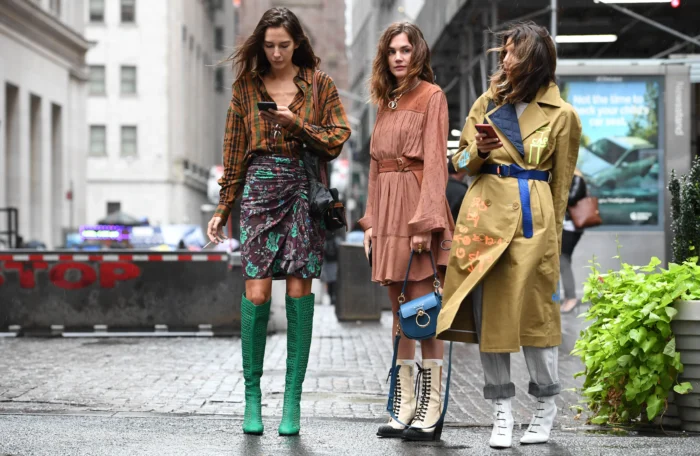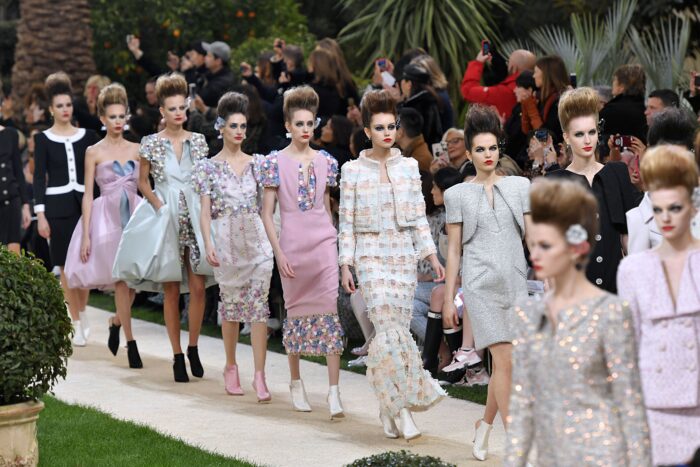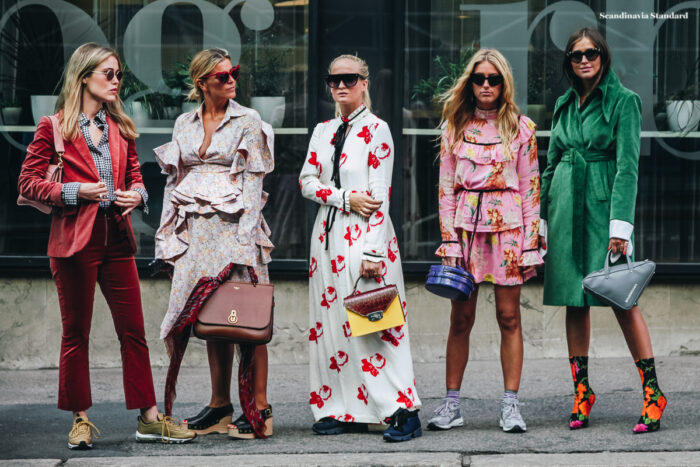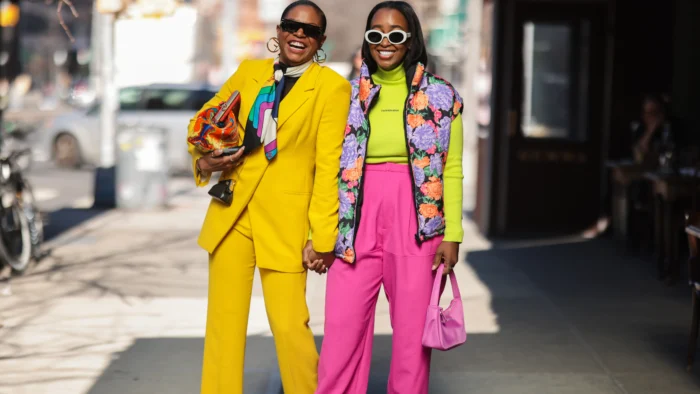Women’s fashion has come a long way since the early days of modest clothing, elaborate corsets, and heavy fabrics. Today, fashion is an art form that allows women to express their creativity and personality. The evolution of women’s fashion can be traced from the streets to the runways, where new trends and styles are born every season. In this article, we will explore the evolution of women’s fashion and how it has influenced the way women dress today.
Table of Contents
Street Style

Street style is a term used to describe the way people dress in their everyday lives, outside of the fashion industry. It is the antithesis of haute couture, the pinnacle of fashion that is reserved for the elite. Street style is where fashion truly begins, and it is the starting point for all fashion trends. It is a reflection of the culture, climate, and lifestyle of a particular place, and it varies greatly from city to city.
History of Street Style
Street style has been around for as long as people have been wearing clothes. In the early days, street style was all about practicality and modesty. Women wore long skirts and dresses, corsets, and petticoats. However, as time went on, women started to experiment with new styles, fabrics, and accessories. The 1920s saw the rise of flapper fashion, with short hemlines, loose silhouettes, and Art Deco-inspired accessories.
The 1950s saw the rise of youth culture, and street style became a way for young people to rebel against the conservative values of their parents. The 1960s saw the rise of hippie culture, with tie-dye shirts, bell bottoms, and fringe jackets. The 1970s saw the rise of punk culture, with ripped jeans, leather jackets, and safety pins.
Modern Street Style

Today, street style is more diverse than ever before. It is a way for people to express their individuality and creativity, and it is no longer limited to just youth culture. Street style is now influenced by social media, with fashion bloggers and influencers sharing their outfits online. This has made fashion more accessible to everyone and has led to the democratization of fashion.
Street style is now a global phenomenon, with fashion capitals around the world showcasing their unique styles. Paris is known for its understated elegance, with chic and sophisticated outfits. New York is known for its urban streetwear, with bold colors and statement accessories. Tokyo is known for its quirky and eclectic fashion, with a mix of high-end and streetwear brands.
Haute Couture

Haute Couture, which means “high fashion” in French, is the pinnacle. Haute Couture garments are custom-made, one-of-a-kind pieces that are hand-sewn and tailored to fit the wearer’s body perfectly. Haute Couture fashion is the ultimate expression of luxury, sophistication, and artistry. It is a world where designers can experiment with new techniques, fabrics, and designs without worrying about commercial viability. While Haute Couture may seem like it’s reserved for the elite, there are still a few places where you can experience the pinnacle. If you’re in Omaha and looking for the ultimate expression of luxury and sophistication, you should check out the best boutiques in Omaha.
Ready-to-Wear
Ready-to-wear, also known as prêt-à-porter in French, is a term used to describe factory-made clothes that are sold in stores around the world. Ready-to-wear is more accessible and affordable than haute couture, and it allows designers to reach a broader audience. Ready-to-wear is all about practicality, comfort, and style.
History of Ready-to-Wear
Ready-to-wear fashion began to emerge in the early 20th century, as mass production techniques became more sophisticated. The rise of the department store also played a significant role in the growth of ready-to-wear fashion. By the 1920s, ready-to-wear had become the dominant form, and haute couture was no longer the only option for women.
The 1950s and 1960s saw the rise of fast fashion, with clothing being produced quickly and cheaply to meet the demands of the growing middle class. Ready-to-wear became more accessible than ever before, with clothing being sold in department stores, boutiques, and discount stores.
Modern Ready-to-Wear

Today, ready-to-wear fashion is a multi-billion dollar industry. It is dominated by large houses and fast retailers, who produce clothing quickly and cheaply to meet the demands of consumers. Ready-to-wear is all about practicality, comfort, and style, and it is designed to be worn by a broad range of people.
Ready-to-wear fashion is no longer just about basic clothing staples like t-shirts and jeans. It now includes a wide range of styles and designs, from athleisure to evening wear. Designers are constantly experimenting with new fabrics, textures, and silhouettes to create clothing that is both stylish and functional.
Sustainability and Ready-to-Wear
One of the biggest challenges facing the ready-to-wear industry today is sustainability. The fast model, which relies on producing clothing quickly and cheaply, has led to a significant increase in textile waste and environmental pollution. Many designers are now looking for ways to create sustainable and eco-friendly clothing that is both fashionable and affordable.
From Runway to Street Style

The runway is where new trends are born. Designers showcase their latest collections on the runway for weeks around the world. A runway is a place where designers can experiment with new fabrics, textures, colors, and silhouettes. Once a new trend has been established on the runway, it quickly makes its way to street style.
Street style is where the real happens. It is where people take inspiration from the runway and make it their own. Street style is about individuality, creativity, and expression. Street type is a place where women can experiment with new trends and techniques, and make them their own.
Conclusion
The evolution of women’s fashion has been a long and exciting journey. From the modest clothing of the past to the haute couture of today, manner has always been a reflection of our culture, society, and values. Women’s fashion has evolved from the streets to the runway, and back to the streets again. Today, women have more freedom than ever before to express themselves through it. Whether you prefer haute couture or ready-to-wear, there is a style out there for everyone.

